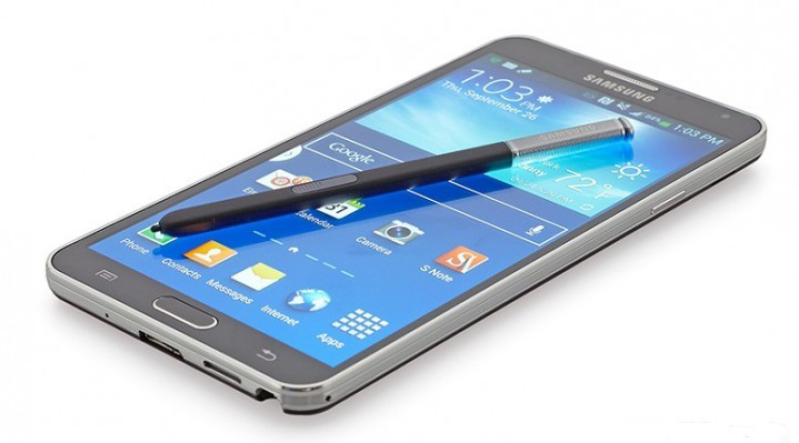
Google's Nexus 6 and Samsung's Galaxy Note 4 are the biggest contenders in the Android "phablet" debate that has many consumers picking sides between the two. But each over-sized smartphone has its own pros and cons, with features that may make one better for you than the other.
Phablets fill that popular niche between traditional smartphones of the last few years and the increasingly popular tablets. While the phones are growing in size and the tablets are shrinking, the sweet spot may have been found with these phablets.
So we've compared the Google and Samsung devices according to several important factors to help you decide which one might be best for you.
Styling
The Nexus sports a slightly sturdier contruction over the mostly plastic Samsung device, which gives the advantage to the Nexus for many reviewers, but it's the ease-of-use for these bigger phones that really matters.
"Looks aside, the Nexus's curved form makes it the far more ergonomic and comfortable-to-hold phone of the pair," Computerworld's JR Raphael points out in his comparison review. "As I noted in my review, although it's slightly larger than the Note, it feels like it's designed to fit into your hand. It's a sharp contrast to the Note's boxy nature, which feels awkward in comparison."
The Nexus 6 is larger (160 x 83 x 10.1 mm) than the Galaxy Note 4 (154 x 79 x 8.5mm) and it also weighs more (184g vs 176g), but the Note 4 comes standard with four color choices compared to the Nexus' two.
Performance
Here's where both phones are the most comparable, thanks mostly to almost identical hardware under the hood. The 2.7 GHz Snapdragon 805 quad-core processor is in both phones (the LTE version of the Galaxy Note 4), and both have 3 GB of RAM standard. Both phones offer 32 or 64 GB of storage, but the Note 4 lets you expand with microSD.
As for software, both are Android phones, but the Nexus 6, being Google's flagship device, enjoys a bit of an advantage with the latest Android 5.0 Lollipop operating system versus the Note 4's 4.4.4 Kitkat. The Note 4 will eventually get Lollipop, but we're just not sure when exactly.
Display
The Nexus 6 features a 5.96-inch 1440 x 2560 AMOLED screen while the Note 4 features a fractionally larger 5.7-inch 1440 x 2560 Super AMOLED display. While these are almost identical screens, Phone Arena points out some small differences in its own comparison. "The Note 4 manages to be the brighter screen with its measured maximum brightness of about 468 nits. Unfortunately, the Nexus 6's display maxes out at about 270 nits, which is fairly low [...] The Note 4 features an alternative screen mode that allows it to switch to a more toned-down, natural-looking image, which is always a good thing to have. Still, we have to acknowledge that the Nexus 6's panel does exhibit a very nice and realistic color balance, which isn't something the Note 4 can totally claim, due to its slight yellowish tint."
Cameras
The Nexus 6 has a 13 MP rear-facing and a 2 MP front-facing camera, compared to the Note 4's 16 MP rear and 3.7 MP front. But the numbers don't always tell the whole story. As Phone Arena points out, "As we've come to know, numbers have no bearing on the actual outcome. In all fairness, the two smartphones here capture some pretty sharp looking photos, but the Galaxy Note 4 produces better, more favorable results."
Battery
Both phones feature a 3,220mAh battery, but there are a few details that differenciate the two. First, if you plan to buy an extra battery to swap out on long, chargerless trips, take note that the Nexus 6's battery is not removable while the Note 4's is.
But the Nexus features the Qi Wireless charging feature, while the Note 4 features Ultra Power-Saving Mode that allows it to save power by turning your display to black and white mode, limit apps, and more. Both phones offer USB quick charge as an option.
Extra Features
While both phones spotlight such similar main features, it's the little things that can really make your decision for you. On the Note 4's side, it includes a stylus, fingerprint sensor, heart rate sensor, one-handed mode, infrared for remote control use, and split-screen multitasking. The Nexus has none of these, but does include dual LED flash and front-facing speakers.
Price
Now we're getting down to the big determiner: price. While the price ranges a bit according to carrier and any special deals, you can find the unlocked 32 GB Nexus 6 for $649 and the same unlocked 32 GB Note 4 for $815. When you sign up for a two-year contract with most U.S. carriers, that price will go down to about $300 for both.
The Nexus 6 is available through Google Play, Motorola Mobility, Best Buy, T-Mobile, At&T, Sprint, Verizon, and U.S. Cellular. The Note 4 is available from several retailers, as well as carriers AT&T, Verizon, T-Mobile, Sprint and U.S. Cellular.







